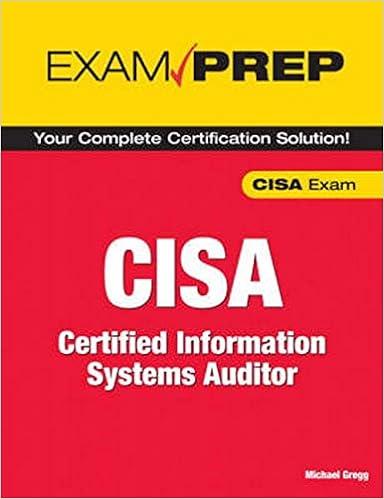Answered step by step
Verified Expert Solution
Question
1 Approved Answer
Carol Baker, CPA, was engaged to audit Mill Companys financial statements for the year ended September 30, Year 1. After obtaining an understanding of Mills
Carol Baker, CPA, was engaged to audit Mill Companys financial statements for the year ended September 30, Year 1. After obtaining an understanding of Mills internal control, Baker decided to obtain evidence about the suitability of the design, and the operating effectiveness, of the controls over Mills shipping and billing functions. During the prior years audits, Baker used nonstatistical sampling, but for the current year Baker used statistical sampling for tests of controls to eliminate the need for judgment. Baker assessed the risks of material misstatement based on the expectation that controls were operating effectively. Accordingly, a tolerable rate of deviation or acceptable upper precision limit (UPL) of 20% was established. To estimate the population deviation rate and the achieved UPL, Baker decided to use attribute sampling with a systematic selection approach. The expected population deviation rate was 3% for the 8,000 shipping documents, and Baker deferred consideration of the allowable risk of overreliance until the evaluation of the sample results. Baker used the tolerable deviation rate, the population size, and the expected population deviation rate to determine that a sample size of 100 would be sufficient. When it was subsequently determined that the actual population was about 10,000 shipping documents, Baker did not increase the sample size. Bakers objective was to determine whether Mills shipments had been properly billed. Baker took a sample of 100 invoices by selecting the first 25 invoices from the first month of each quarter. Baker then compared the invoices with the corresponding prenumbered shipping documents. When Baker tested the sample, eight deviations were discovered. Additionally, one shipment that should have been billed at $10,443 was actually billed at $10,434. Baker considered this $9 to be immaterial and did not count it as a deviation. In evaluating the sample results, Baker made the initial determination that a reliability level of 95% (risk of overreliance of 5%) was desired and, using the appropriate statistical sampling table, determined that for eight observed deviations from a sample size of 100, the achieved UPL was 14%. Baker then calculated the allowance for sampling risk to be 5%, the difference between the actual sample deviation rate (8%) and the expected deviation rate (3%). Baker reasoned that the actual sample deviation rate (8%) plus the allowance for sampling risk (5%) was less than the achieved UPL (14%). Thus, the sample supported the operating effectiveness of the controls. Indicate whether each listed statement about Bakers procedures is correct or incorrect. Statement Answer 1. Statistical sampling eliminates the need for professional judgment. Incorrect 2. The tolerable rate of deviation or acceptable upper precision limit (UPL) is acceptable (20%) if Baker plans to rely on internal control. Incorrect 3. Systematic selection is an appropriate sampling method in this attribute sampling application. Incorrect 4. The sampling method used is not systematic sampling. Incorrect 5. Baker properly deferred consideration of the allowable risk of overreliance
Step by Step Solution
There are 3 Steps involved in it
Step: 1

Get Instant Access to Expert-Tailored Solutions
See step-by-step solutions with expert insights and AI powered tools for academic success
Step: 2

Step: 3

Ace Your Homework with AI
Get the answers you need in no time with our AI-driven, step-by-step assistance
Get Started


